Art Boghozian, Director of Business Development for Unmanned and Counter-Unmanned Business at Amentum speaks on drones and wearable tech at the AFA’s 2024 Air, Space, & Cyber Conference at the Gaylord Convention Center in National Harbor, Md.
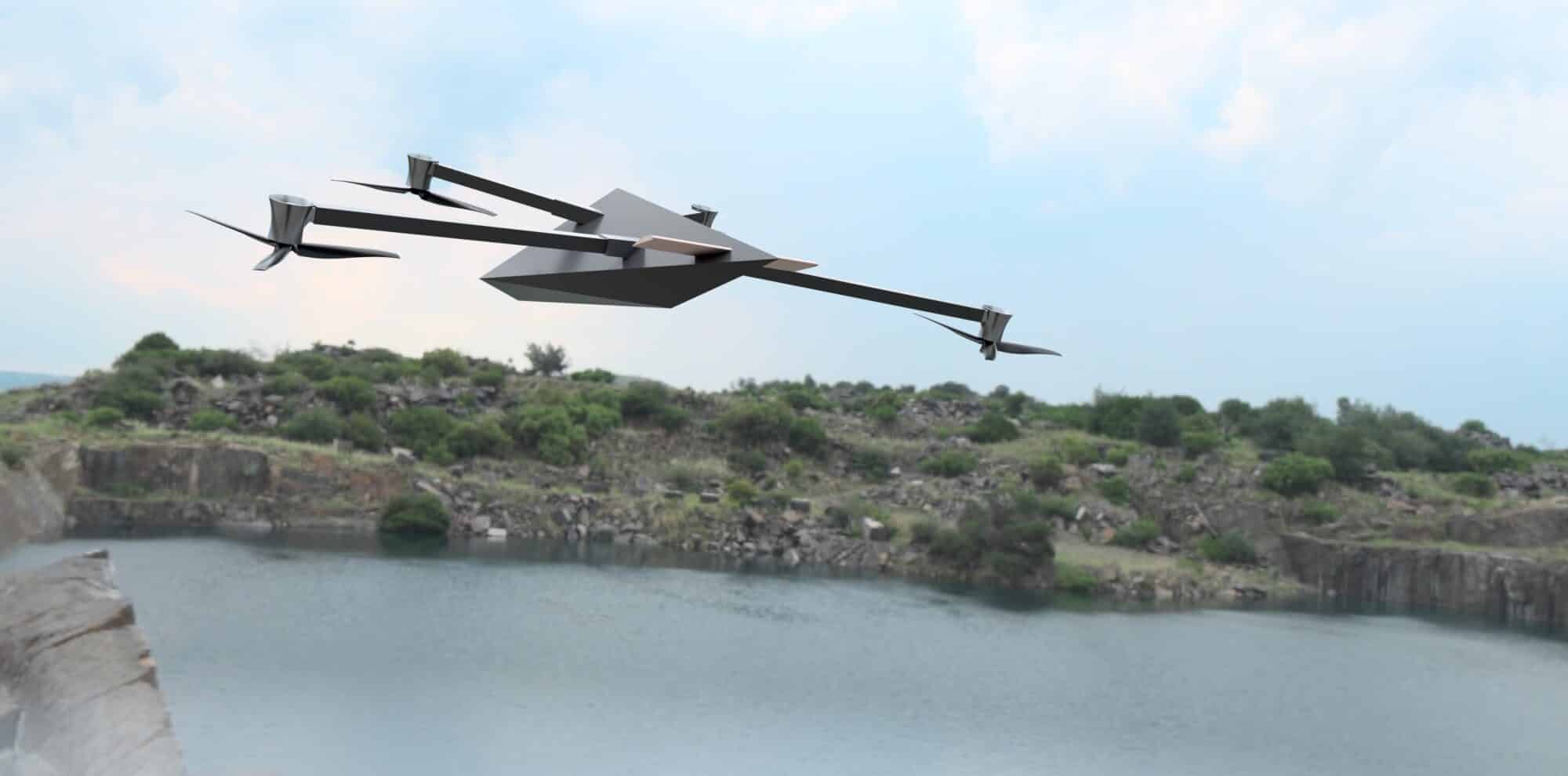

Art Boghozian, Director of Business Development for Unmanned and Counter-Unmanned Business at Amentum speaks on drones and wearable tech at the AFA’s 2024 Air, Space, & Cyber Conference at the Gaylord Convention Center in National Harbor, Md.
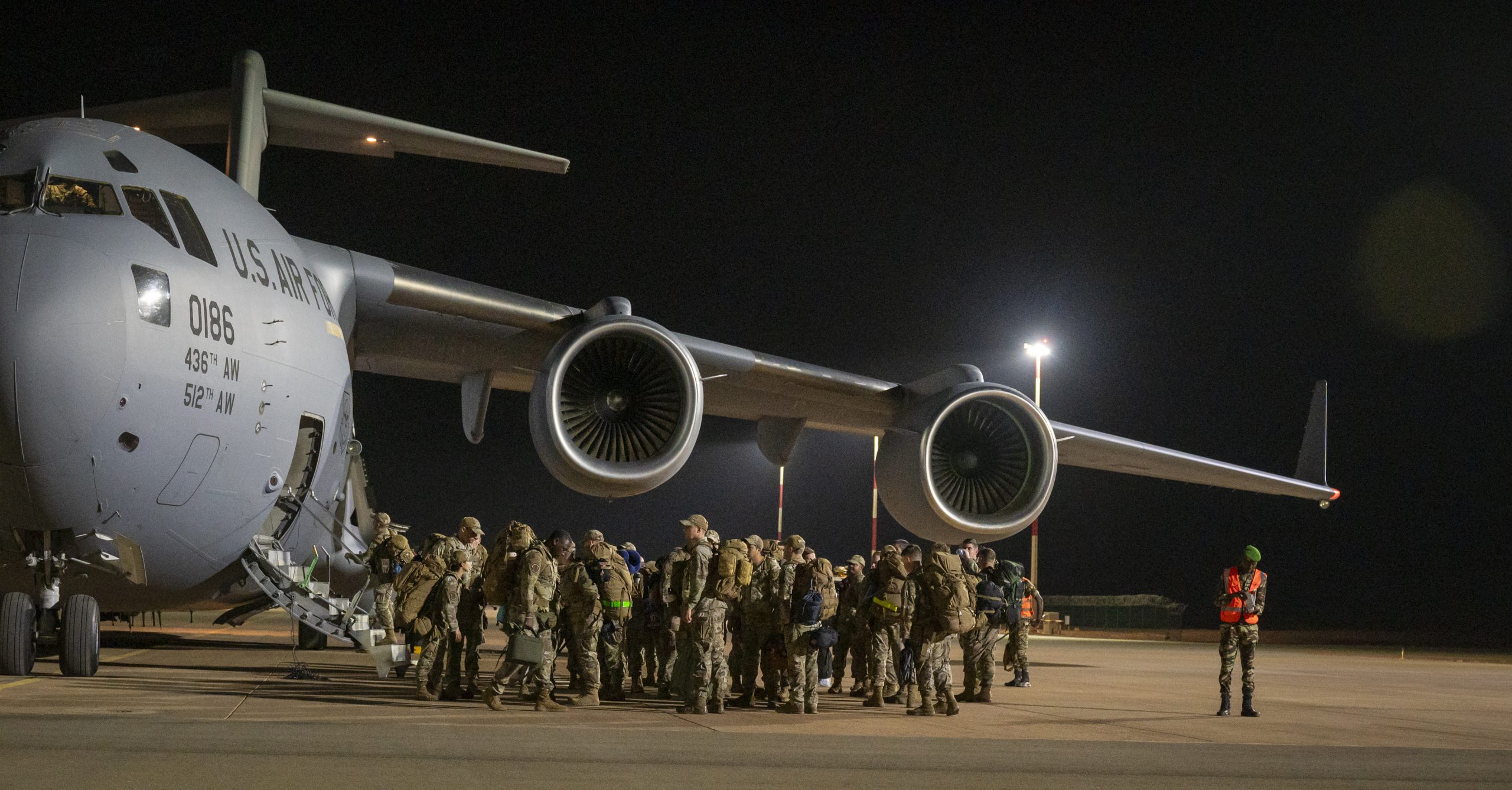
NATIONAL HARBOR, Md.—The Space Force used commercial satellite services to support the withdrawal of U.S. forces from air bases in Niger this summer, Chief of Space Operations Gen. B. Chance Saltzman said Sept. 17—a key milestone in the service’s efforts to integrate commercial capabilities into operations and dig deeper into space-based intelligence, surveillance and reconnaissance.
Saltzman highlighted the effort during a keynote address at AFA’s Air, Space & Cyber Conference here as he described the successes of the Tactical Surveillance, Reconnaissance, and Tracking (TacSRT) “pathfinder” program.
TacSRT functions as a marketplace from which the Space Force can buy tactical information from commercial providers to support combatant commanders. In speeches over the last 18 months, Saltzman has noted how the program has supported natural disaster responses across Africa, South America, and Asia; in his keynote, he said it provided “timely analysis of suspicious activities by violent extremists along the border of Rwanda and the Democratic Republic of Congo.”
Yet it was the withdrawal of troops from Air Base 201 in Niger that “stands out the most,” said Saltzman.
“In August, throughout the withdrawal, the team maintained overwatch of everything within 5 kilometers of the base,” he said. “On average, the timeline from collection on orbit to delivery into the hands of security forces was about three-and-a-half hours, but the team got it down to as little as one-and-a-half hours from collection to the security forces by the end of the event.”
Two U.S. air bases in Niger served as critical hubs for missions targeting extremist groups in the volatile region, but the Pentagon withdrew its forces after a military junta overthrew the elected Nigerien government in July 2023. Amid widespread unrest, the Space Force was able to monitor the situation in an area where situational awareness was limited for forces on the ground, Saltzman said.
“What the TacSRT pilot program does is, we simply ask a question into the marketplace: ‘Hey, what generally does it look like around Air Base 201?’” Saltzman told reporters after his keynote. “Are there any items of interest, trucks that are massing? Is there a huge parking lot? Do we see people milling around? We simply ask the question. And commercial industry provides us products that try to help us answer the question.”
Providing that information to security forces to ensure the withdrawal proceeded smoothly and safely is “just proof positive that space makes a difference and makes the joint force better,” Saltzman said.
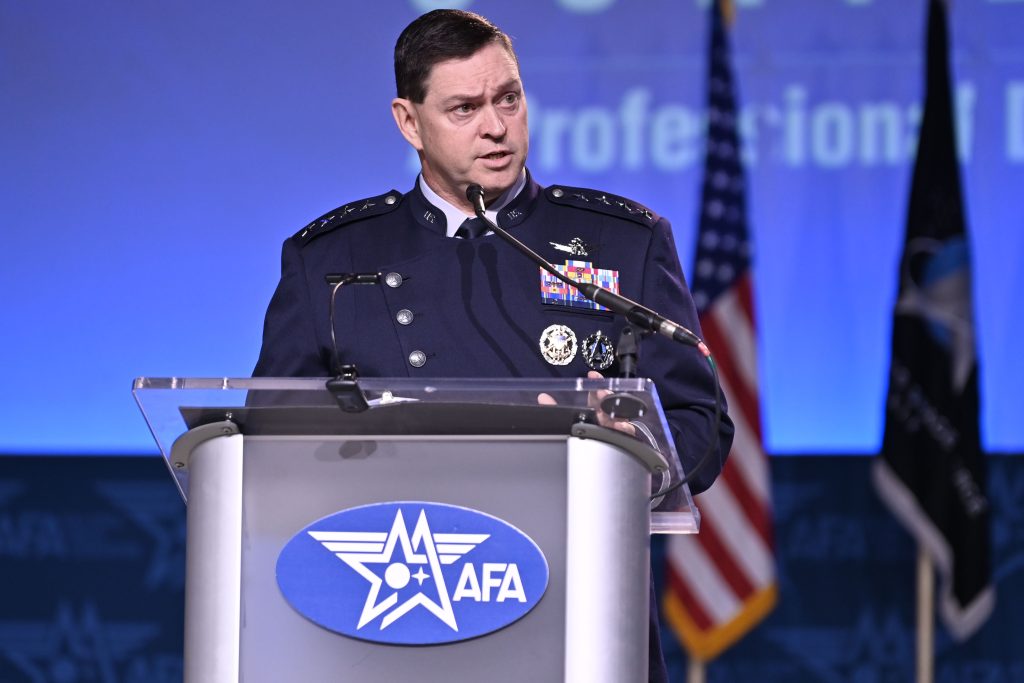
The Space Force is eager to use more commercial satellites and systems, with leaders saying it will allow them to gain and field capabilities faster than they could build themselves with limited resources. In particular, the service’s first Commercial Space Strategy ranked TacSRT fourth on a list of mission areas where the Space Force would seek to create “hybrid” architectures of military and commercial systems.
Now that TacSRT has proven it offers operational value, the question is how the Space Force will expand and fund it. Congress added $40 million for the program in fiscal 2024, and lawmakers are now debating over the level of funding for 2025.
Included in that debate are questions over the roles of the Space Force and the intelligence community. The House Appropriations Committee directed in its proposed budget bill that the Space Force and the National Geospatial-Intelligence Agency coordinate their efforts to avoid duplication, while giving the NGA director the ability to provide lawmakers with regular assessments and recommendations for the TacSRT program.
The Senate Appropriations Committee, for its part, wants to renew the program’s funding at $40 million.
Saltzman indicated that he was unconcerned about the TacSRT program stepping on any toes, saying in his keynote that it is meant “to complement the exquisite work done by the intelligence community.” Both he and Col. Richard Kniseley, the head of Space Systems Command’s Commercial Space Office, told reporters that the program is not buying imagery, but rather “operational planning products.”
TacSRT also does not provide targeting information, Saltzman noted—the Space Force and the National Reconnaissance Office are working on a separate program to deploy targeting satellites.
“It’s taking the data that’s already available, procured through the NRO and some of it through the NGA, and getting the commercial analytics to make sense of it and to figure out some pattern movements, if you will,” Kniseley said during his own media roundtable.
In that sense, Saltzman said, the program is almost akin to “surveillance as a service.”
Commercial satellite imagery has proven to be a lucrative market for everything from environmental monitoring and forecasting to disaster response, areas where the U.S. military is often called upon for help. The Pentagon wants to shift some of its own surveillance and reconnaissance enterprise for tracking threats to space as well.
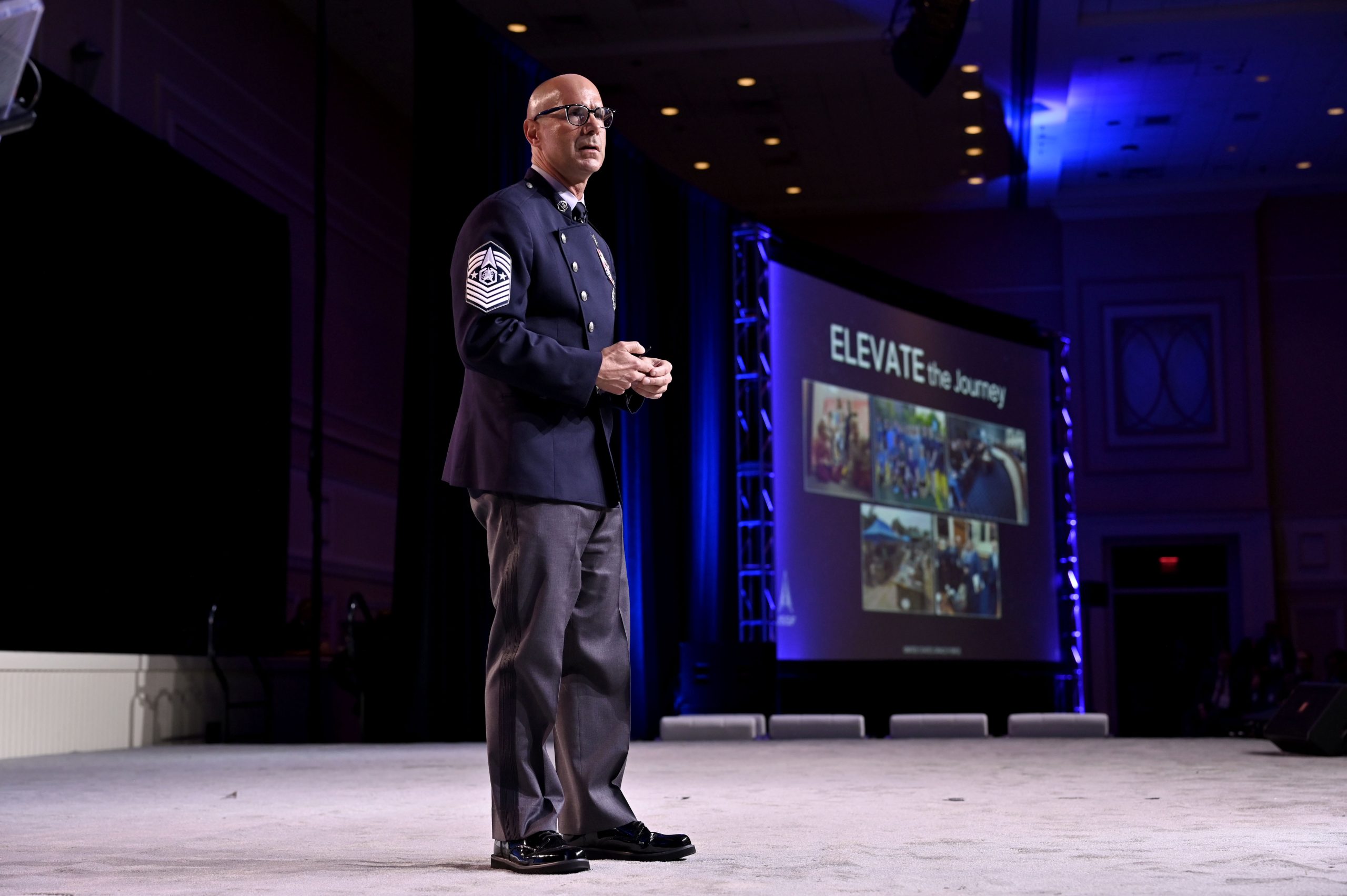
NATIONAL HARBOR, Md.—The Space Force’s top enlisted leader unveiled an ambitious project to transform the career paths for the service’s 4,900 enlisted Guardians. The new “Vision for the Enlisted Force: Development Path” aims to make each Guardian’s training experience more meaningful and to better prepare them for the increased responsibility they will face in the branch’s unique force structure.
“We have today, at the five-year point of the service, to make the decisions and set the conditions for the success of Guardians 20 years from now,” Chief Master Sergeant of the Space Force John F. Bentivegna told Air & Space Forces Magazine.
The new model is part of a larger plan to transform the entire Guardian experience, which Bentivegna hopes to achieve through three key initiatives: improving the quality of life and service for Guardians and their families; optimizing training, development, and talent management; and investing in the legacy of the service so that Guardians feel connected even after they hang up the uniform.
“I want to make sure that your experience is one that you value, one that you respect, one that you brag about when you talk to your friends and your neighbors and your family,” Bentivegna said Sept. 17 at AFA’s Air, Space & Cyber Conference. “That’s why I envision the Guardian experience. That’s why these are my key initiatives.”
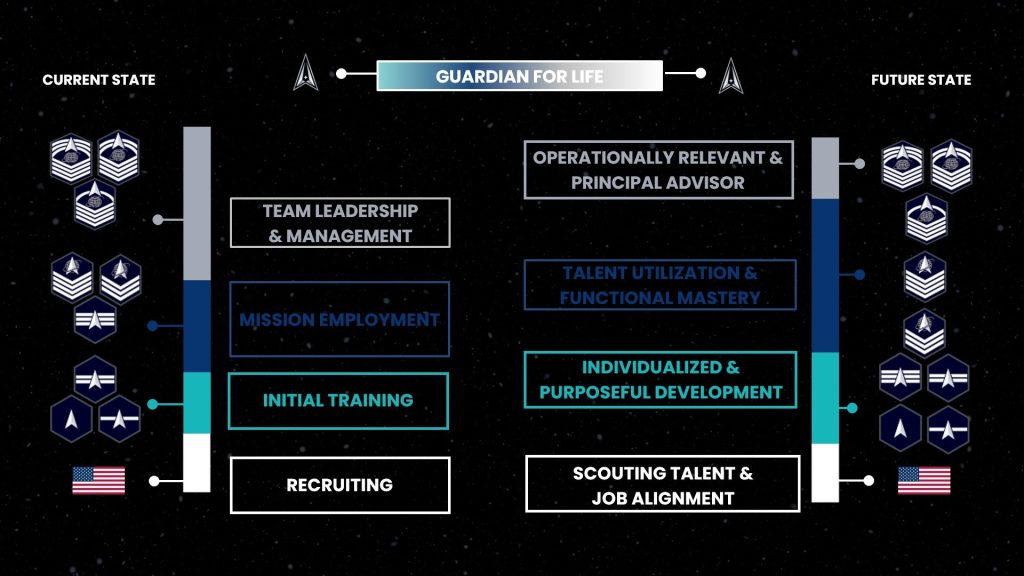
Before enlisted Guardians ever get near basic military training, the process begins with recruiting. Today, the Air Force Recruiting Service recruits for the Space Force, but it must do that at two vastly different scales: AFRS will bring in roughly 27,000 enlisted Airmen across 130 job specialties this fiscal year, compared to just 700 new Guardians in three job categories for the Space Force.
The partnership is working well so far, but Bentivegna sees the potential for change.
“They’re doing a phenomenal job and I have no complaints about the Guardians that are being recruited today,” Bentivegna said. “It’s just doing so in a model that’s not optimized for what we need, or it doesn’t embrace the opportunities that we could leverage because of who we are and the size that we are.”
The Space Force is creating a detachment within AFRS to build a strategy for taking on the recruiting mission, Bentivegna said last month. Bentivegna also hopes to refine the service’s initial assessments of recruits. The Armed Services Vocational Aptitude Battery (ASVAB), the military’s standard entrance exam, does not capture with enough granularity whether a candidate is best suited for a particular career field, he said.
“It doesn’t really give me a measurement of success to say, ‘based on the assessments we’ve done, I really think you’d be really good at intel,’ or ‘I really think you’d be good at cyber.’” the chief explained. “The fidelity just isn’t there yet.”
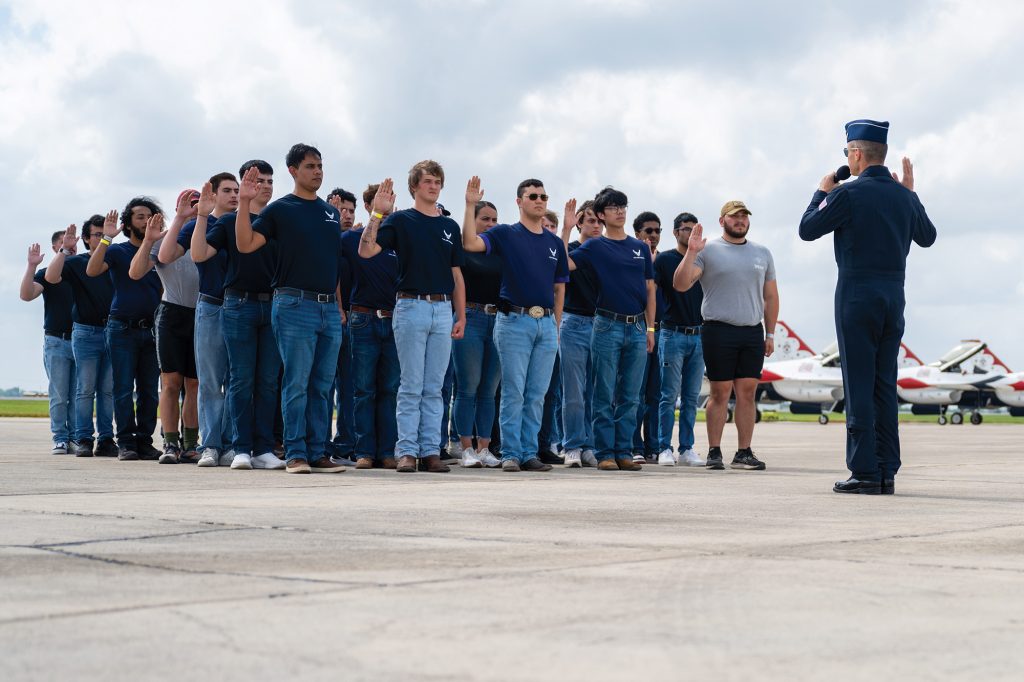
Beyond specific skill sets, Bentivegna also hopes to test potential recruits for character and grit, personality traits he believes can be as important as technical skills for a Space Force career.
“I don’t want to disenfranchise anyone who has the grit and character to be a Guardian, but maybe they didn’t go to a high school that offered advanced placement courses,” he said. “I want to be able to cast a wide net and encourage individuals from all walks of life, and I can teach them orbital mechanics, I can teach them math and science.”
The project would also refine initial skills training, where Bentivegna hopes a Guardian’s performance will have a more direct impact on their early career. For example, the Space Force assigns new Guardians based on which tech school they just graduated from, but does not necessarily factor in whether the Guardian performed particularly well in a specific kind of intelligence, for example.
A future model would continually assess Guardians’ strengths and interests, which could affect their first operational assignment and level of responsibility coming out of tech school. While the needs of the service come first, USSF’s compact size enables more flexibility for placing Guardians where they can make the most meaningful impact. The chief compared it to how college students can choose focus areas, elective courses, or minors within their degree field.
“Did they show strengths and interest in orbital warfare for space superiority, or in advanced research of capabilities that some of our adversaries may be developing,” he said. “I want to structure these courses so that they’re meaningful: They understand as they go through it, it’s going to have a direct impact on their career opportunities and career progression.”
Likewise, trainees who show higher levels of maturity and aptitude might expect more responsibility and opportunity “as you prove yourself to the institution through these transparent and equitable processes,” he said. But the chief cautioned against using the word “promotion,” which he believes has a more competitive connotation than the term “career advancement.”
“It’s not about competition amongst Guardians,” he said. “It’s about individualized accomplishments and progression in their own individual career.”
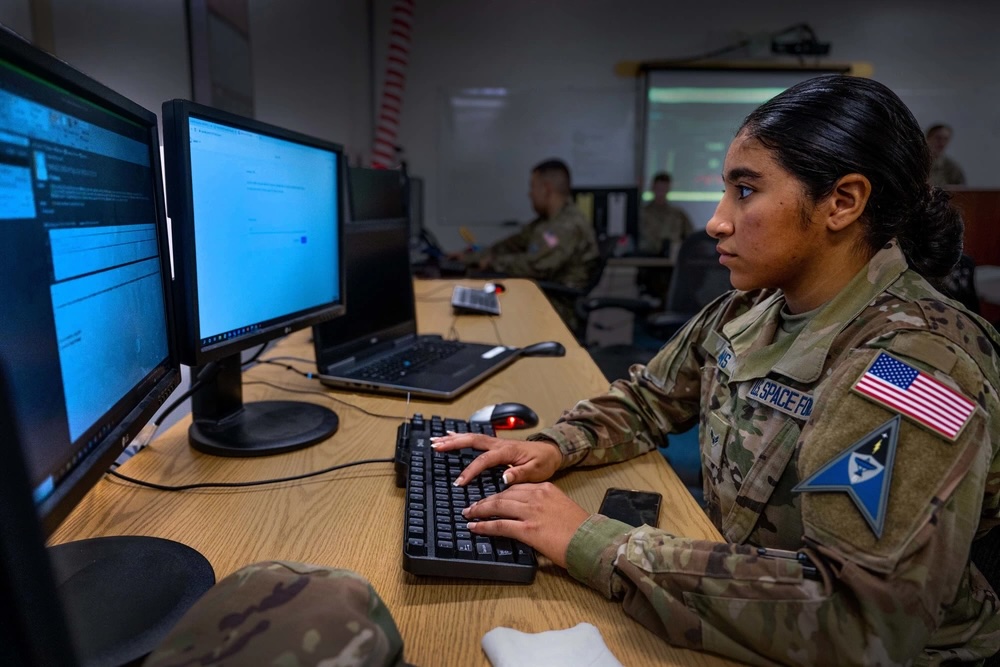
Bentivegna also hopes to weave the space domain into a Guardian’s tech school experience. Currently, cyber and intelligence enlisted Airmen and Guardians go to the same tech schools, where much of the concepts and philosophy focus on winning in the air domain.
“In the future, we want it to be space-minded-specific domain training that they’re getting in the tech schools,” he said.
The Space Force is considering splitting off its own tech schools, though that option is still being evaluated, Bentivegna said. In August, Bentivegna also announced a new Noncommissioned Officer Academy tailored to the Space Force. USSF is also developing course programming for officers, launching its first Officer Training Course this month, a one-year, full-time program for all newly-commissioned officers.
“There are things long-term where we will have a relationship with the Air Force, but there are things as a service that we need to do on our own,” the chief said in his keynote address.
Unique among the military branches, the Space Force’s officer-to-enlisted ratio is nearly 1:1, with some operations leaning more enlisted-heavy, Bentivegna said. That suggests different requirements for senior enlisted experts, he said, anticipating that “there is going to be a need for master sergeants specifically to do more tactical leadership with increased responsibility … doing the day-to-day mission in our combat squadrons.”
The model is a change from today’s construct where senior noncommissioned officers are responsible for a smaller share of day-to-day responsibilities.
“A lot of times today our senior noncommissioned officers, our master sergeants, get through their technical sweet spot and right away we’re pushing them to do management and backshop activities,” Bentivegna explained. “I don’t think that’s where we need to be in the future.”
Changing that may require more flexibility in how assignments are distributed.
“It’s less about ‘I need a sergeant, here’s a sergeant who’s up for an assignment,’” he said. “It’s more about individualized talent management specifically informed by the Guardian and the needs of the service.”
Under the future model, Guardians can expect to stay hands-on even as they rise to the highest enlisted ranks. Bentivegna recalled trying to get into meetings as an E-9 only to be told “you don’t need to go to that meeting because this is not like, management stuff, this is operational stuff,” he said. “You don’t have the clearances, you don’t need to know what’s going on operationally.
“That’s a complete pivot where we’re going: where our senior leaders are going to be just as responsible for the readiness and training and execution of operations as their teammates,” he added. “When I talk about the future, I want to really hammer home the expectation that you never lose that requirement to be operationally relevant.”
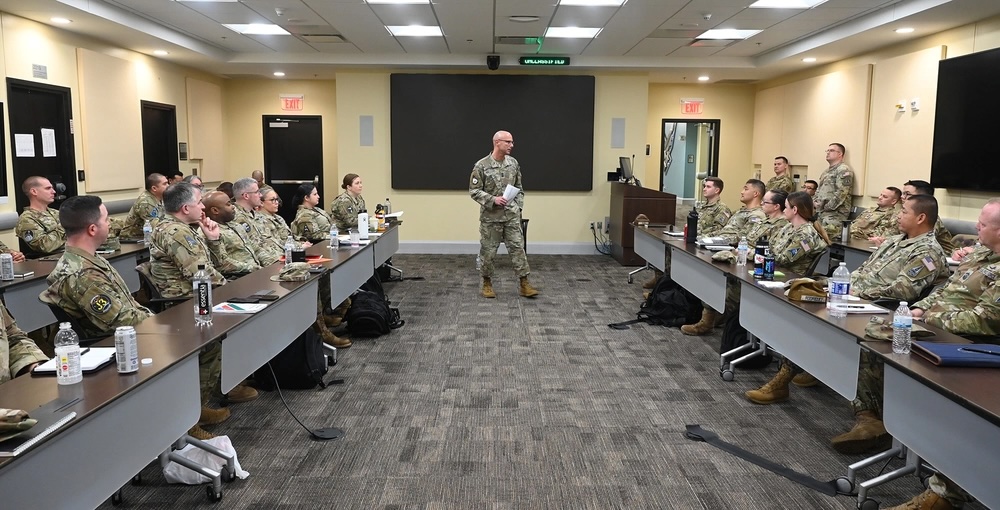
The project marks the Space Force’s latest effort to balance mission readiness, quality of life, and personal fulfillment, a balance which it holds at the core of its identity. Other initiatives include a part-time Guardian force, continuous fitness tracking, and distinct new uniforms.
But actually implementing these changes takes time, with some Guardians citing the term “semper soon,” a riff on the branch’s motto “semper supra.”
Bentivegna acknowledged that achieving this new vision for the lifecycle of enlisted Guardians could take years. For now, he and his team are still figuring out what policies, programs, or even legislation may need to change and what stakeholders need to be involved. As chief enlisted leader, Bentivegna has the power to provide guidance, influence, and intent, but not to execute policy decisions.
Still, the chief said the project is necessary for the Space Force to be ready for the future. The project comes at the end of a busy 18 months which saw the service reissue its mission statement, stand up new units called integrated mission deltas and integrated system deltas, and redefine its operating theory, called competitive endurance. The changes have been “evolutionary” for the service, he said, which drove his vision for the enlisted force. That, and questions from senior service leaders asking how to develop the force of the future.
“It will take many evolutions, many steps, years, to fully implement this,” Bentivegna said. “But if we don’t invest in the future today, we’re never going to get there.”
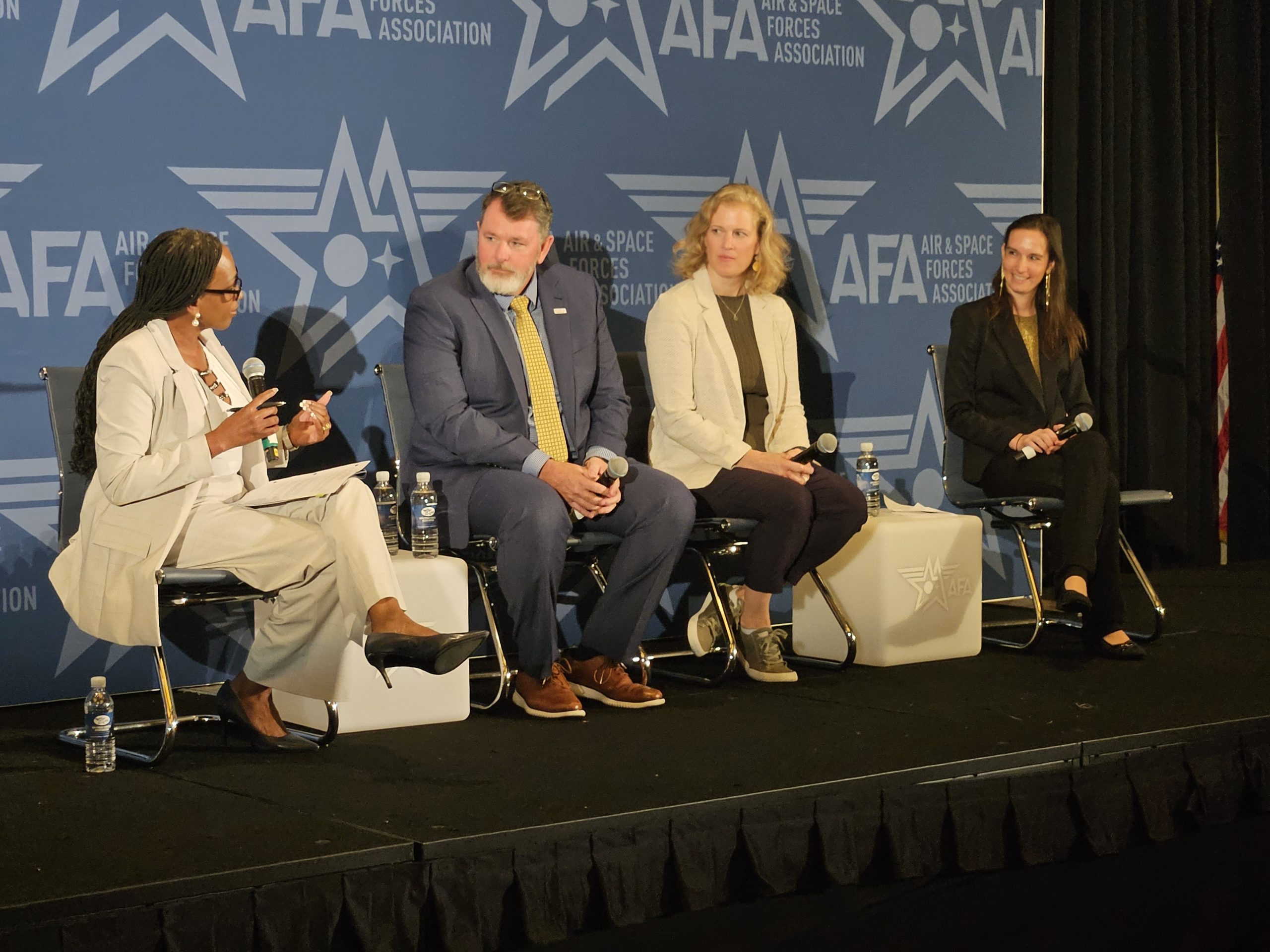
NATIONAL HARBOR, Md.—The Air Force and its fellow military services need to stop thinking about cyber as a technology issue and focus on learning how to use it as a weapon of war, the U.S. Navy’s former top cyber advisor Chris Cleary said Sept 16.
“I still think all the services are struggling as to how they’re going to embrace cyber,” Cleary told Air & Space Forces Magazine after speaking on a panel about cyber dominance at AFA’s Air, Space & Cyber Conference.
“You talk about cyber dominance, and people start talking about Zero Trust and what the [Chief Information Officers] do,” said Cleary, now a vice president with defense contractor ManTech. “No. This is about warfighting.”
Earlier, Cleary told the panel, moderated by Department of the Air Force CIO Venice Goodwine, that military cyber operators need to start thinking and talking about the ways that cyber tools could be used to inflict damage on the enemy.
“What is our business?” he asked, “The Department of Defense exists fundamentally for two reasons, to deliver lethality or prevent lethality from being delivered upon us.”
His remarks come as Air Force leaders are publicly grappling with the relationship between cyber and other nonkinetic conflict modes like electronic warfare and information operations. In particular, they are weighing the future of the 16th Air Force, a sprawling Numbered Air Force that encompasses cyber attacks, electronic warfare, traditional surveillance and reconnaissance, public affairs and information operations, and weather forecasting.
Air Forces Cyber is being elevated to the status of a service component command, on part with Pacific Air Forces or Air Forces Central. But that leaves a question mark over the future of the 16th Air Force, since AFCYBER accounts for a significant proportion of its 49,000-strong personnel.
Air Force Secretary Frank Kendall told the conference earlier Sept. 16 that service leaders remain committed to the integration of cyber and electronic warfare in a single command structure: “There must be uniform focus on this (EW) area as a whole,” he said.
As the cyber dominance panel was drawing to a close, Goodwine asked the audience of Air Force personnel and industry contractors to shout out what cyber dominance meant to them. “Winning,” yelled one Airman.
“Thank you,” replied Cleary.
To be taken seriously as warfighters, Cleary explained, cyber operators needed to embrace their role as bringers of death and destruction on America’s enemies. “You are a player on the field, not a support element in the back office, but you have to demonstrate you can hit with power,” he said.
There were still too many commanders who are skeptical of the real utility of cyber capabilities, Cleary said, seeing them as “a parlor trick.”
Commanders need to have confidence that “cyber effects can be delivered at a time and place of our choosing to support other kinetic things that we’re going to do,” he said. Without that confidence, he said, they will “just put a [conventional/kinetic] weapon on that target anyway, just to be on the safe side,” eliminating the potential advantages offered by a non-kinetic option.
The services can help by being more transparent about their offensive cyber capabilities, especially if they want proper funding from Congress, he said. “You can’t say you need $1 billion and then when they ask what for, tell them: ‘I can’t discuss that,’” he said.
Those who want a public discussion of U.S. offensive cyber capabilities are treated “as if they’d taken a crazy pill,” he added.
Cleary argued that classification issues shouldn’t be a barrier to public messaging about offensive cyber capabilities.
“I can tell you about the Columbia class submarines the Navy is building. I do not know how deep it can go, how quiet it is, or the range, yield or accuracy of its weapons. But I know it goes underwater, I know it’s probably quieter than the last one, and I know it carries nuclear warheads,” he said. “And I know how many we’re building and when they’ll be delivered. None of that has to be secret.”
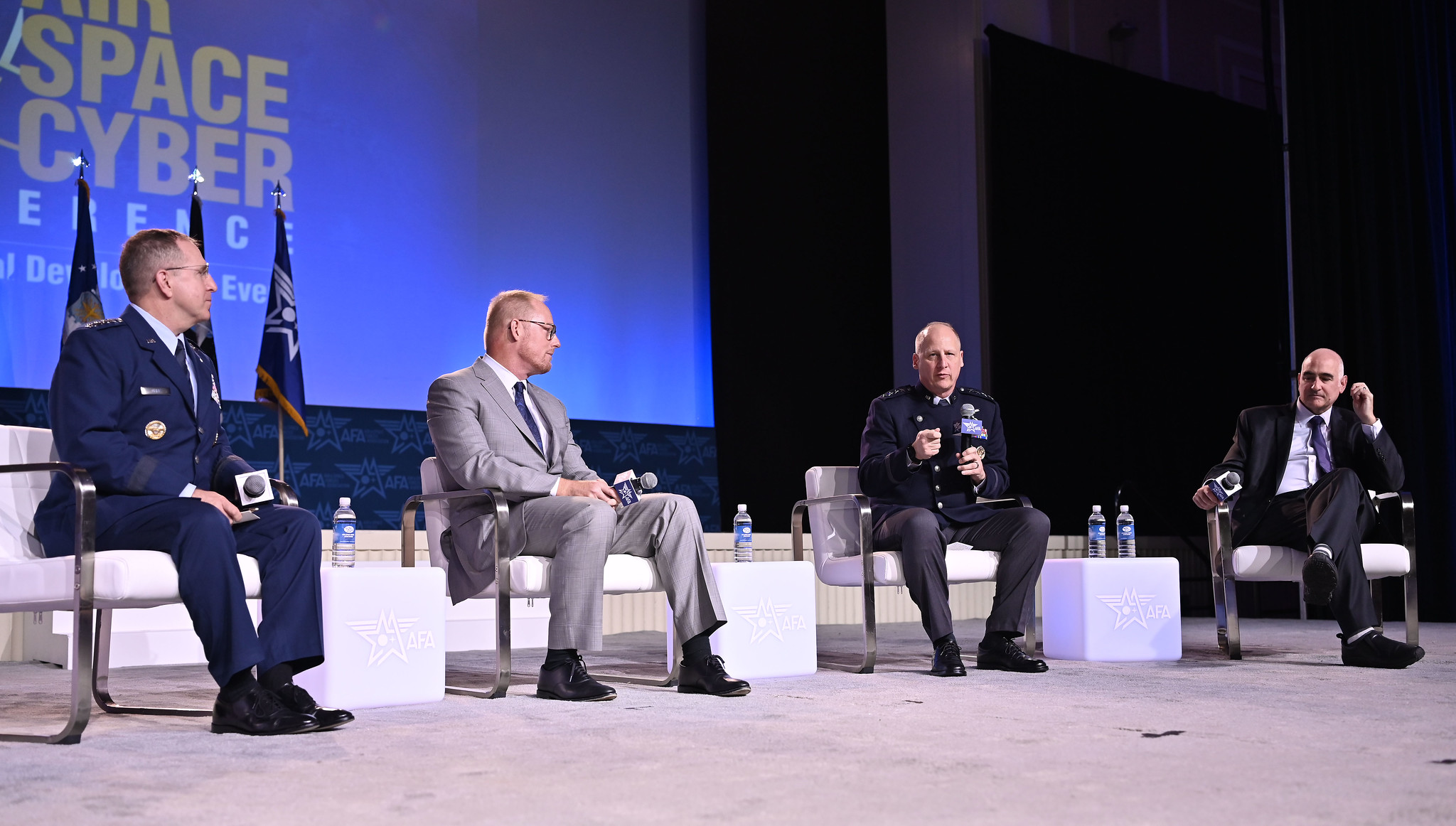
NATIONAL HARBOR, Md.—With only a few weeks left before the Department of the Air Force begins fiscal 2025 without a new budget, leaders argued both the Air Force and Space Force are underfunded now and for the foreseeable future at pivotal moments for both services during AFA’s Air, Space & Cyber Conference on Sept. 16.
“As I look at our needs going forward, it is apparent to me that more resources will be required,” Secretary of the Air Force Frank Kendall said in a keynote address to open the event. “The Space Force is beginning a transformation that must be executed quickly and at scale. That takes resources. The Air Force must move to a new generation of more competitive capabilities as quickly as possible. That takes resources.”
Kendall has often expressed frustration with Congress’s delayed budgeting process; on a near-annual basis, lawmakers have used so-called continuing resolutions to keep the government from shutting down. The stopgap bills keep spending frozen at the previous year’s levels and prevent new programs from being started. Fiscal 2025 starts Oct. 1, and there is virtually no chance a new budget will get done before then.
Yet beyond the usual consternation over continuing resolutions, Kendall and other leaders went further in calling out a perceived funding shortfall for the department.
In summer 2023, lawmakers agreed to the Fiscal Responsibility Act, which limited defense spending to one percent growth in fiscal 2024 and 2025. Accounting for inflation, that has meant a real term decrease in the Department of Defense’s budget.
With a modest size and aggressive modernization plan, the Space Force has been hit particularly hard by those caps. The Space Force’s 2024 budget, as enacted by Congress, was around $29 billion, less than the Biden administration requested. In fiscal 2025, the service is requesting $29.4 billion.
“We have the smallest budget and the largest [area of responsibility,]” Vice Chief of Space Operations Gen. Michael A. Guetlein said. “We need people and we need money. And right now, being the smallest service, we’re struggling to get the resources we need to do the modernization that you need, but also to buy the new kit, the leading edge kit, to get after the threat that is accelerating at an exponential space.”
Guetlein said there is a solution to keep the U.S. ahead of China and Russia, which he warned were catching up to America in space: “What we’ve got to do is invest and invest to a point that we can stop that gap from closing, but reverse that gap.”
The budget crunch is also hurting the Air Force, which is responsible for the massive Sentinel intercontinental ballistic missile program, not to mention its new B-21 Raider and its paused Next-Generation Air Dominance fighter
Price was a key driver of the NGAD decision. Kendall told reporters Sept. 16 that the service wants to buy an NGAD fighter, envisioned initially to cost multiple hundreds of millions of dollars, but for the price of an F-35, which costs around $80 million. Whether the Air Force can afford an advanced new jet is just one of the many tough choices the service faces in the next few years, its No. 2 officer said.
“It essentially comes down to it comes down to military personnel, modernization, or readiness. Those are the trades. The challenge with modernization is you have to pay for it somehow,” Vice Chief of Staff of the Air Force Gen. James C. Slife said. “We know what we have to do. That’s not a particular mystery. … We don’t want to hollow force. The very difficult work in deciding how to modernize is you either have to have more resources, to Secretary Kendall’s point, or you have to make very difficult choices within the resources you have.”
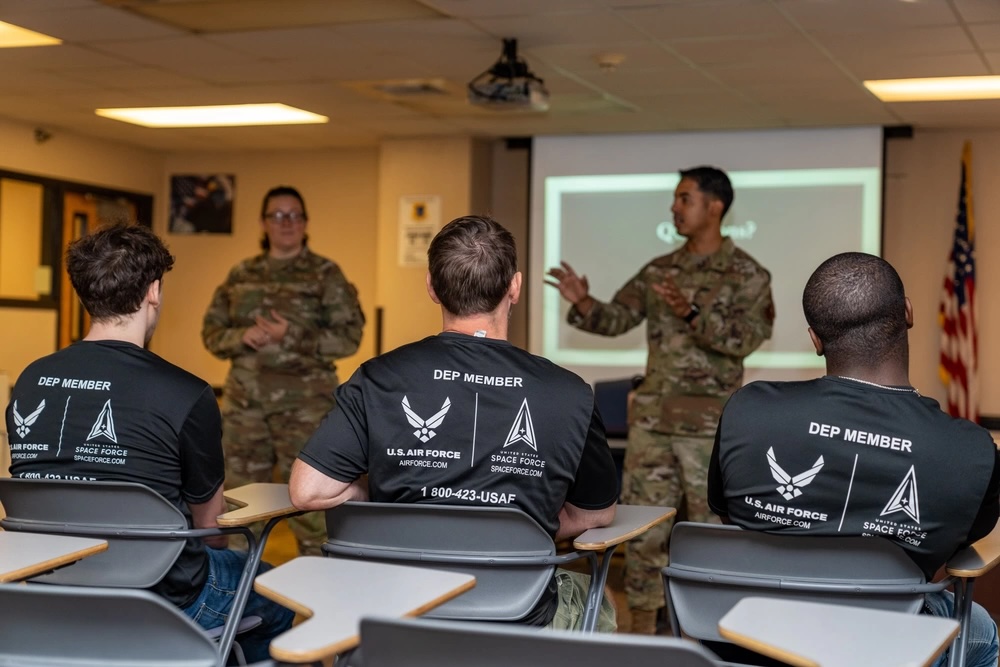
NATIONAL HARBOR, Md.—A year after the Air Force fell 10 percent short of its recruiting goals, the service will hit its fiscal 2024 goal and aim even higher for a 16 percent larger pool in 2025. The branch’s top recruiter, Brig. Gen. Christopher Amrhein, said a plus-up of 370 recruiting staff will help put that target in reach.
In 2025, the Air Force Recruiting Service is shooting for:
“It’s ambitious, but I believe it is executable,” Amrhein told reporters at AFA’s Air, Space & Cyber Conference. Though he did not say whether the 370 additional personnel would consist entirely of recruiters, the extra staff “is a sizable jump, and I think it definitely sets us in the best footing we can.”
The fiscal 2024 goal was 27,100 Active-Duty enlisted recruits. Achieving it marked a sharp comeback from fiscal 2023, where the Air Force missed its recruiting goals for the first time since 1999. That year’s goal was 26,877 new enlisted Airmen, which the Air Force missed by about 10 percent, though the Space Force exceeded its own goal of 472 Guardians.
Amrhein credited the bounceback to new incentives, process improvements, and an ongoing effort to broaden the pool of eligible candidates.
“There wasn’t one thing,” that made 2024 successful, the general said. “It was multiple levers being pulled in unison.”
Over the past few years, these levers have included allowing small hand and neck tattoos, aligning the Air Force body fat composition rules with Defense Department standards, and giving some qualified applicants a chance to retest if they test positive for marijuana use.
On the incentive side, the enlisted college loan repayment program, enlistment bonuses, and a quick-ship bonus have also helped, but one of the most successful incentives in fiscal 2024 was the accelerated naturalization program, which Amrhein estimated brought in about 1,400 recruits. It is not uncommon for a new class at Basic Military Training to have 30 or more citizens-to-be, he said.
In January, Amrhein also adjusted the Air Force’s legal permanent resident requirement from 10 years to two to align with the Defense Department allowances. AFRS is also looking to expand the number of job specialties open to U.S. citizens or establish a conditional delayed entry program (DEP) for recruits who are still working through the naturalization process.
Changes to the recruiting and medical assessment processes helped too. One of the largest barriers to enlistment is the medical review process. The electronic health record system MHS-Genesis connects to most civilian health information exchange networks to give U.S. Military Entrance Processing Command access to an applicant’s medical history, but the history is often incomplete or insufficient, requiring extra documents, which slows down the process.
“About 8,800 people in 2023 walked away from the accessions process because the medical assessment was taking too long,” Amrhein said. “That’s talent we just can’t afford to have walk away.”
Last year, the Air Force hired 63 contractors to help move the process along, giving recruiters more time to focus on bringing in new talent. Amrhein said the contractors are meant to serve as a bridge solution while USMEPCOM works to bring down its processing times.
AFRS has also changed how it recruits, including a new “deliberate focus” on training and adjusting goal timelines from quarterly to monthly, which shows trends earlier, the general said.
The plus-up of 370 recruiting staff should help as well. Guided by studies conducted by the RAND Corporation and Air Education and Training Command, AFRS plans to place many of the new recruiters across the U.S. “southern smile” which stretches from California to the southeast coast. Others will work from military bases across Europe and the Pacific to attract the dependents of current service members or other citizens living abroad.
AFRS is also testing out agile recruiter cells, where two or three recruiters at a squadron headquarters can help colleagues farther away who need help handling new leads.
“If we need to surge support into a certain region, then we have the ability to flex those within that squadron’s area of responsibility, rather than have them permanently placed in some areas,” Amrhein explained.
Finding volunteers to fill those recruiting slots usually has not been a challenge, said AFRS senior enlisted leader Chief Master Sgt. Rebecca Arbona, and all 370 of the new slots are either filled or currently in the AFRS schoolhouse. It helps that the service reopened the recruiter duty back up to Senior Airmen, rather than limiting it to noncommissioned officers.
“Opening that up lets us grow them a little earlier and we’ll probably have them for a longer duration of time as well,” she said.
Recruiting is still a challenge, Amrhein warned. Competition with private industry is fierce, public awareness of service is low, and even with the 370 plus-up, AFRS still has the smallest recruiting footprint in the military. But the recent changes and partnerships with agencies such as Civil Air Patrol and the Air & Space Forces Association should help, he said.
“We cannot take our hand off the throttle,” Amrhein said.
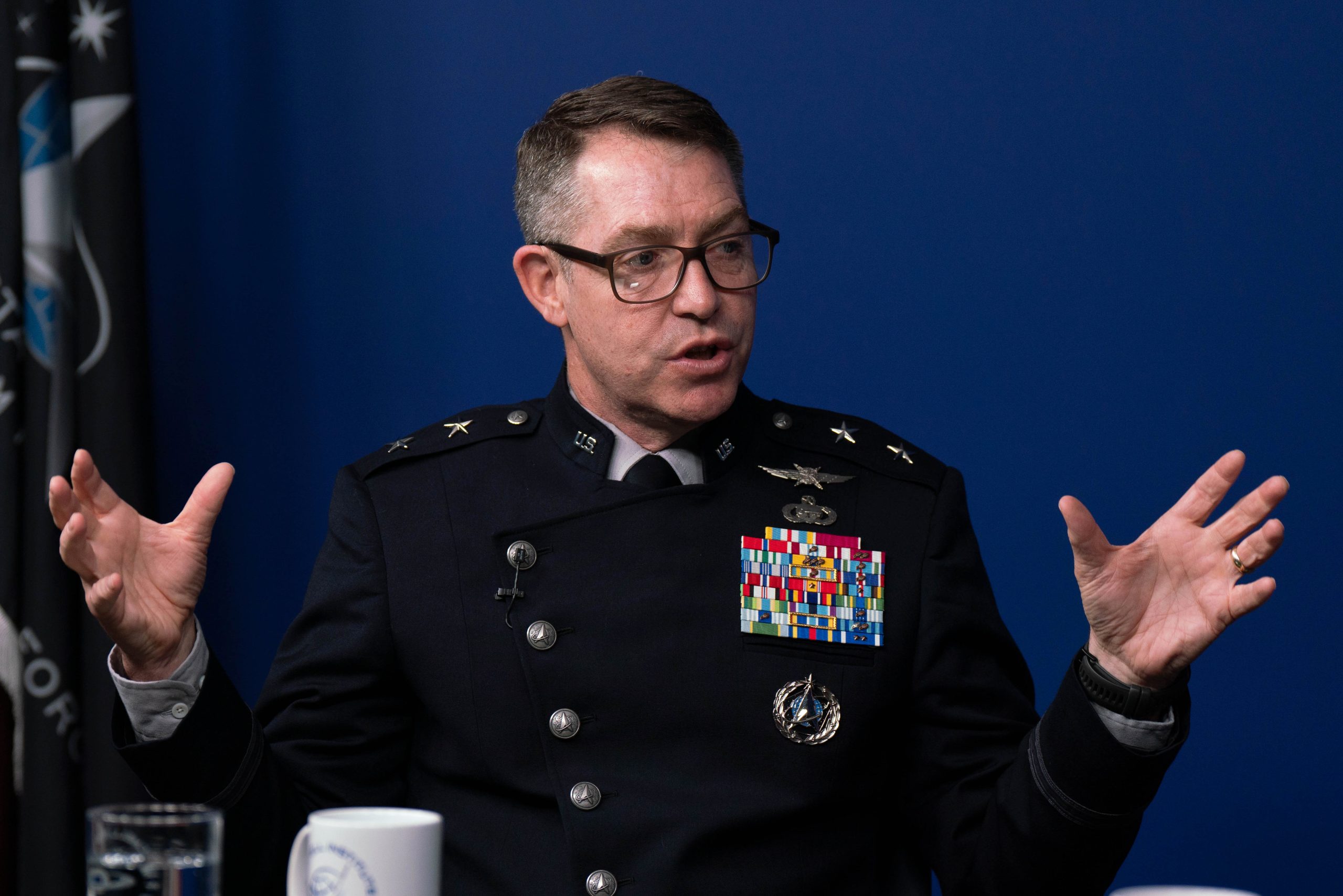
NATIONAL HARBOR, Md.—The People’s Republic of China recently launched its 1,000th satellite into orbit, said Maj. Gen. Gregory J. Gagnon, the Space Force’s chief intelligence officer on Sept. 16.
Speaking at AFA’s Air, Space & Cyber Conference here, Gagnon said China had put about 200 satellites in orbit in the past year. “Probably three weeks ago, the PRC surpassed 1,000 satellites in outer space,” he said. “And if you went back 10 years, in 2014, they only put 24 satellites up that year. So you can see the rate of change is rapidly progressing.”
Gagnon, who previously cited China’s “strategic breakout” in space, said the People’s Republic of China has shifted the way space must be monitored. “Twenty years ago, sensing [what’s happening in] outer space was a little bit like being a traffic cop,” he said. “But today, there’s people who drive in outer space very differently than a passive traffic cop can understand.”
Other Space Force leaders have noted in recent months that China is expanding its presence in space to support its own military, even as it continues to develop capabilities to hold U.S. and allied satellites at risk. Indeed, the Pentagon’s latest China Military Power Report notes that in 2022, the PRC launched “over 180 satellites into orbit, which is a five-fold increase in satellites deployed compared to five years ago.”
That growth gets to the heart of the differences between space situational awareness and space domain awareness; situational awareness refers to knowing where an object is, like tracking debris, while domain awareness includes being able to characterize the how and why of an object’s actions.
Having that deeper level of understanding is only getting harder as China expands its satellite constellations—and yet there is a widespread expectation for it, said Kay Sears, vice president and general manager of space, intelligence, and weapon systems at Boeing.
“It’s a little bit of a given that we’re going to have all the systems in place to know all the objects, to track all the objects, to understand what they’re capable of and what their intentions are,” said Sears. “I think there’s a big assumption out there, and so we have a lot of work to do when we think about some of our competition in space.”
On top of that, the speed at which that awareness has to be achieved is only increasing, said Sears.
“The SDA mission has been expanding dramatically. It’s not just now about space domain awareness from space, but it’s actually in space as well,” she said. “We have to have a critical understanding of all of that in real time.”
Faced with these growing demands, the Space Force has expanded its sensor network—with a little help from commercial providers, Gagnon said.
“In four and a half years, we’ve moved from about two to three dozen sensors that observed outer space so that we can understand the space domain environment to now over 600 sensors or apertures around the world,” Gagnon said. “And you may ask, how can the United States government actually move that fast? Maybe we can’t, but our commercial sector can, and we have leveraged our commercial sector, which is by far the world’s finest in space domain awareness.”
Among those sensors is the new Deep-Space Advanced Radar Capability (DARC), a U.S.-U.K.-Australia collaboration acquire data and services from contractors, and more commercial solutions are likely to follow. The Space Force’s commercial space strategy defined domain awareness as among its top priorities.
Integrating it all will be a separate task. “Much like the collection that now goes on the ground or from space to the ground, it’s changing with just the proliferation of systems,” said Christopher Long, deputy general manager and vice president of space systems at General Dynamics Mission Systems.
The Space Force’s main effort to consolidate all those sensors has been the Unified Data Library, one gigantic repository for data from allies and commercial partners on space domain awareness.
“Not only are we able to take that data information and put it into a central location, but other users with authorized access are able to get that same information and co-mingle it with their own information from systems,” said Murali Krishnan, vice president and general manager for the payload and ground systems division at Northrop Grumman Space Systems.
Gagnon noted that there are more than 4,500 authorized users of the Unified Data Library from 20 countries, making it a crucial space domain awareness tool.
“It’s the critical piece of software that a young Guardian or a young JASDF staff member or a young member of the British Armed Services sits down to understand what’s going on in space,” he said.
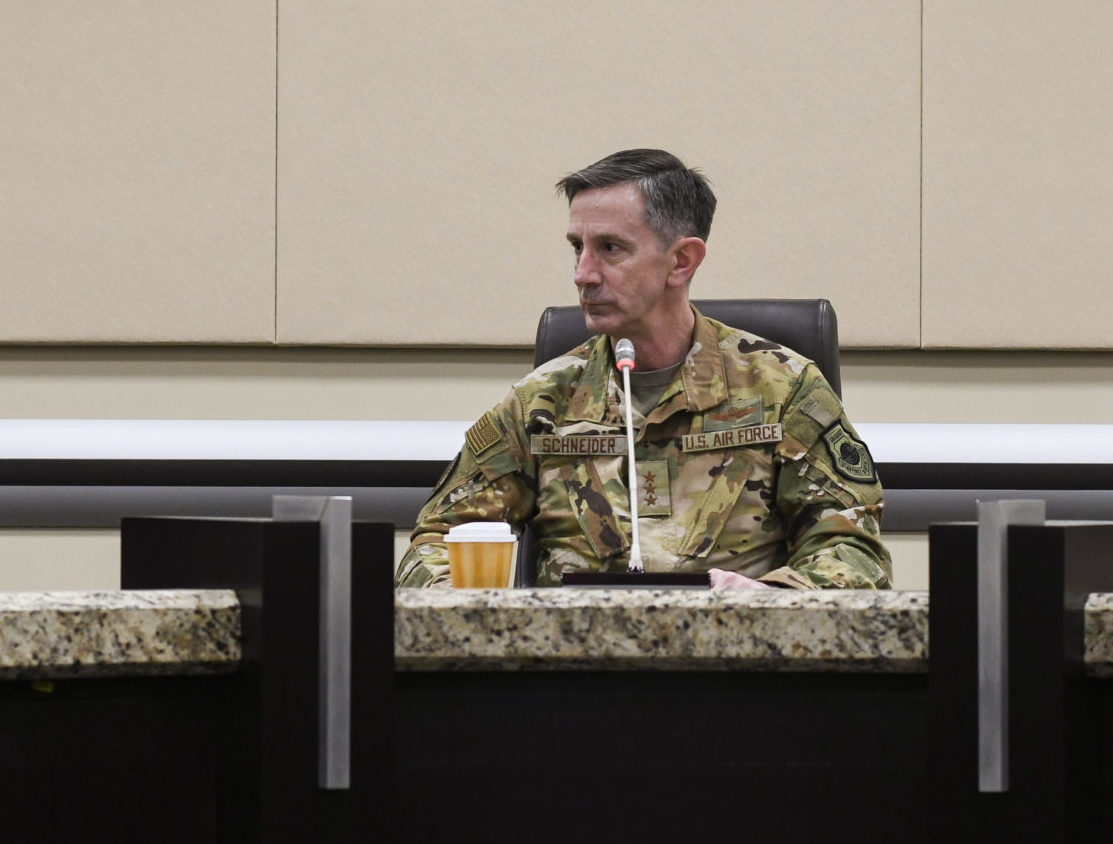
NATIONAL HARBOR, Md.—Russia and China are ramping up their joint military operations, and the head of Pacific Air Forces is keeping a close watch, though he and other analysts noted limits to the two nations’ cooperation.
“It is unclear to me what their long-term goals and objectives are, other than to counter what the United States and allies and partners are doing,” PACAF commander Gen. Kevin B. Schneider told reporters at AFA’s Air, Space & Cyber Conference on Sept. 16. “We do continue to watch and see how they work together, and see if they are able to combine tactics, techniques, and procedures and to work more effectively as a force.”
Just last week, Russia announced a weeklong naval and air exercise involving some 120 aircraft and 400 naval vessels, with China adding its warships and planes to the mix. Beijing said the joint drills are meant to enhance strategic cooperation between the two countries and “strengthen their ability to jointly deal with security threats.”
The two nations have grown closer in recent years, particularly following Russia’s all-out invasion of Ukraine in 2022. In May, leaders Xi Jinping and Vladimir Putin pledged a “new era” of partnership, following Xi’s claim that the two nations are driving “changes” together. Experts believe this shared worldview is central to their relationship, with China seeking to learn from Russia as it eyes a potential invasion of Taiwan in the coming years.
“The interesting thing that has happened since Russia invaded Ukraine is that the PRC sees this as a blueprint for how they might expect the U.S. and the West to react to a Chinese invasion or military activity against Taiwan,” National Intelligence Manager for East Asia Wayne Ulman said during a panel discussion. “China has taken many steps over the last couple of years to harden its own economy and indigenize as much key technologies to create dependencies, from supply chains for key minerals to legacy chips. … And so, essentially, if the West tries to impose the same sort of sanctions that we did against Russia, we would be essentially cutting our own throats.”
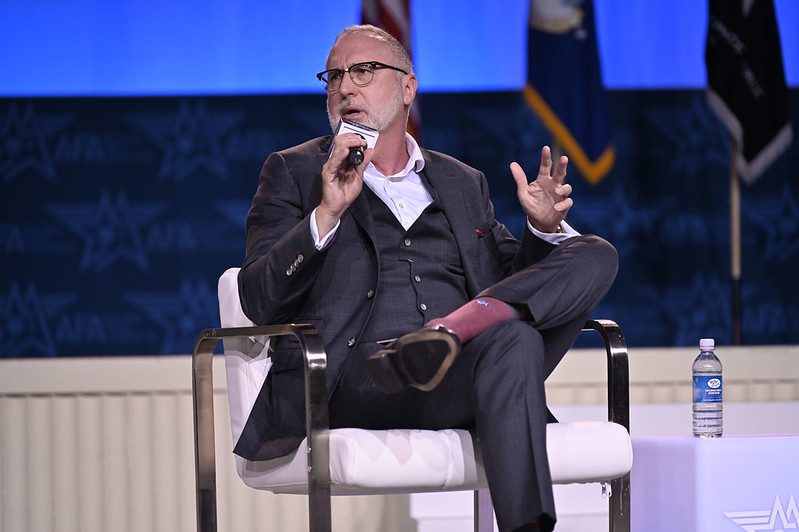
The China-Russia partnership hit a new milestone in July when the two countries’ military aircraft simultaneously entered the Alaska Air Defense Identification Zone (ADIZ) in July, the first time Chinese H-6 bombers have flown in the area. The aircraft, which remained in international airspace, were intercepted by American and Canadian fighters off the coast of Alaska.
Also in July, shortly after NATO labeled China a key player in the Ukraine conflict, Beijing and Moscow conducted a joint naval exercise at the same military port in southern China. The Chinese defense ministry claimed that these drills were unrelated to international tensions and the exercises were to showcase their naval capabilities with anti-missile drills, sea strikes, and air defense.
However, Schneider noted that despite rising concerns regarding the ties between China and Russia, the top two threats identified in the U.S. National Defense Strategy, he sees “potential limits” to Beijing-Moscow cooperation in military exercises and believes it is too early to gauge their potential for closer alignment.
“It’s too early to draw conclusions on that, other than what I would describe it as more of a partnership of convenience, vice a deep-seated connection the way we have: a connection of values with our allies and partners,” Schneider said.
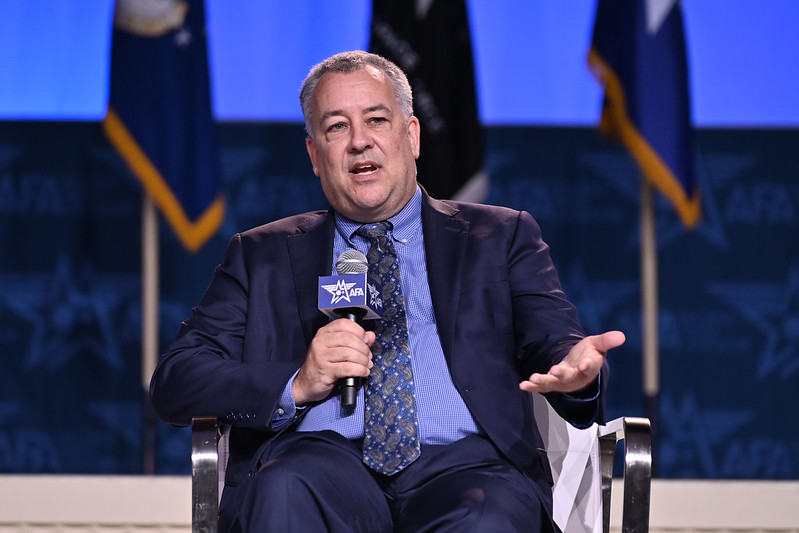
Other military leaders and China watchers echoed that view, noting that China’s relationship with Russia isn’t on par with Washington’s ties to its Pacific regional allies or NATO. Brendan Mulvaney, director of the China Aerospace Studies Institute at Air University, said the two countries’ defense collaboration is “far from an alliance,” at least so far.
“We’ve seen no real interoperability (between China and Russia).” Mulvaney said. “They continue to do something new, it is slow, and it is step by step, but it is continuing, and it is far more than they ever did, and we should expect to see more cooperation. However, it’s still a long way from an alliance, to the point where the People’s Liberation Army might show up in Ukraine.”
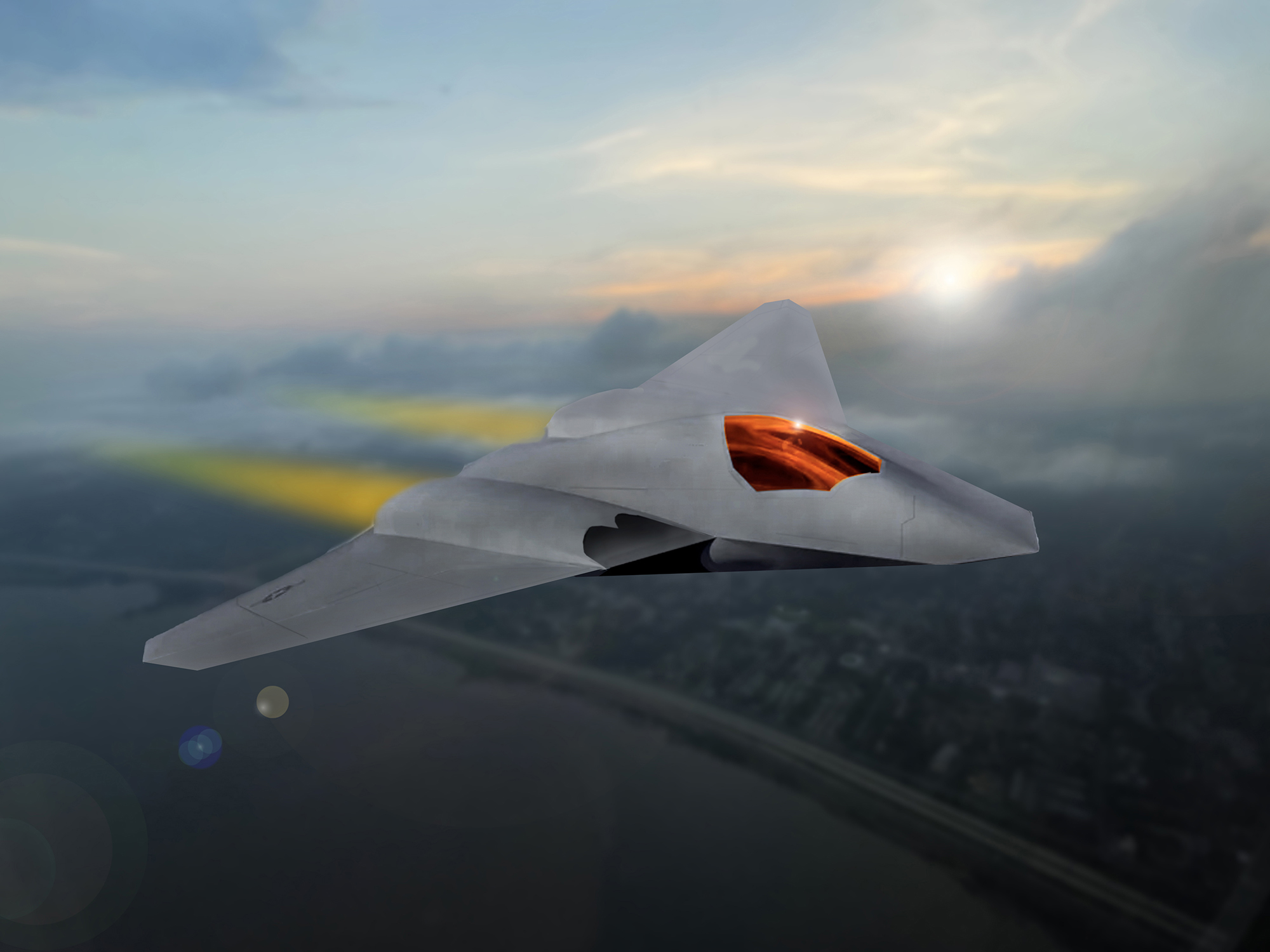
NATIONAL HARBOR, Md.—The Next-Generation Air Dominance fighter—once envisioned as a hyper-expensive, exquisite platform—could be restructured to slash its price to less than an F-35, Air Force Secretary Frank Kendall told reporters at AFA’s Air, Space & Cyber conference.
Kendall and other senior service officials also said decisions about the future of NGAD, begun just two months ago, must happen fast in order to inform the Air Force’s fiscal 2026 budget request, which will likely be wrapped up internally in just a couple of months.
Making NGAD less costly could mean sacrificing range and payload, possibly going from two engines to one, a counter-intuitive solution that could be possible only if the Air Force had a stealthy Next-Generation Air-refueling System (NGAS) that could evade adversary’s missile systems. Kendall linked NGAD and NGAS in his keynote address, before emphasizing a key commitment.
“We are not walking away from the core United States Air Force function of providing air superiority,” Kendall said in a keynote address, repeating the comment for emphasis.
Speaking to reporters later, Kendall said the options are all open for now on what NGAD could look like.
“We haven’t set a number or threshold” for the price, he said, before offering an intriguing suggestion: “I’ll just give you this off the top of my head: The F-35 kind of represents, to me, the upper bounds of what we’d like to pay.”
That would peg the target price at between $80 million and $100 million, a fraction of the “multiple hundreds of millions of dollars” Kendall has previously cited for NGAD. “I’d like to go lower, though.”
Getting to a lower price comes with disaggregating capability, shifting missions to other platforms. “… “Once you start integrating [Collaborative Combat Aircraft] CCAs and transferring some mission equipment and capabilities functions to the CCAs, then you can talk about a different concept,” Kendall said.
CCA costs are targeted in the zone of about $25 million. Those costs too must be managed, or the CCA becomes too expensive to sustain.
Kendall announced a “pause” on the NGAD selection this summer, citing cost and concern that developing technologies and emerging threats deserve to be examined before USAF commits to the program’s high cost. The Air Force is “taking a hard look” at the NGAD concept, he said.
“The design concept [is] several years old,” Kendall explained. “The requirements are several years old.” NGAD was meant to replace the F-22 and designed “very much for a specific mission under a specific set of circumstances.”
A reconsideration is needed “because of threat changes, because of financial constraints, because of the development of technology, including the introduction of CCAs,” Kendall said.
Given the gulf between Kendall’s previous price estimate and his new projection for NGAD, the question arises: How can the Air Force trim costs?
Vice Chief of Staff James C. Slife, in an earlier conference panel discussion, noted that the traditional method of developing a new air superiority fighter required “designing the characteristics around the platform; around the size of the radar you need, the range of the aircraft, how many Gs you wanted to pull. … You optimize for all of those things inside of a inside the platform.”
That will likely change, he suggested.
“We’ve gotten to a point where [with] our systems-level integration, we have the ability to disaggregate these capabilities and look at air superiority more broadly,” Slife said. “So the radar may be in one location, the munition may be in another location.”
If the Air Force gets it right, Slife said, “this will be an enduring source of competitive advantage for the United States military. … It is a potential step change in American military capability.”
Kendall noted that he started the NGAD prototyping program when he was the Director of Acquisition, Technology, and Logistics at the Pentagon in the 2010s. During that time, there was debate, he said, over whether to focus more on unmanned aircraft.
“My judgment at the time was that we weren’t quite ready to do that, but there were a number of other technologies that we needed to mature and demonstrate for the next, sixth generation, if you will,” he recalled.
The pause has led some to speculate whether NGAD might itself be unmanned, or optionally manned, but that does not seem to be the direction Kendall is leaning.
If an F-22-scale NGAD turns out “to be the most cost-effective operational answer, that’s what we’re going to do, and go fight for the money to have it.”
But if the price is too high, the fleet would be small. “The more the airplane costs, the fewer you’re going to have. Numbers do matter.”
Whatever the Air Force does, it has to move quickly, Kendall said, citing expectations from Congress and industry as well as the need to submit a 2026 budget.
Kendall has previously said the NGAD contract would be awarded this calendar year, but that won’t happen now.
To aid the process, the Air Force has assembled a blue-ribbon committee of senior former service leaders to review and possibly vet the service’s new approach to NGAD. The panel members, listed alphabetically, include three former chiefs of staff and two other experts:
Chief of Staff Gen. David W. Allvin, during his own press conference, said the group comprises “a broad portfolio of experts with a mandate to “really assess our assessments, look at the evaluations we’re doing, making sure we’re really not missing anything in our analysis, in how we understand the threat and how we understand the capabilities that are going to be required of our Air Force to meet that threat. Their job is to look at that and give us feedback and insights that they see that will help us do this analysis that we have to do in fairly short order.”
The group will not make the final decision, though, Allvin said. He and Kendall “will get the final say on what will be proposed to the Office of the Secretary of Defense.” And of course, Congress “will have a say after that.”
Whether all that can be accomplished quickly is uncertain, though. If a radical change is needed in NGAD, it would likely mean terminating the previous program and starting over with a new trip through the Pentagon’s Joint Requirements Oversight Council process. Then it would need to go through the Office of Management and Budget. Collectively, it is a process which could take many months and likely not before the fiscal 2026 budget submission without top-level intervention.